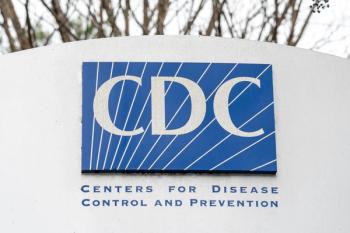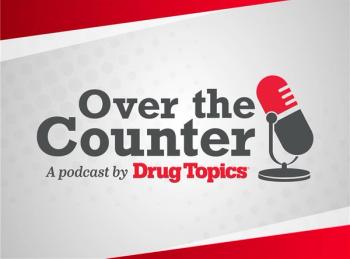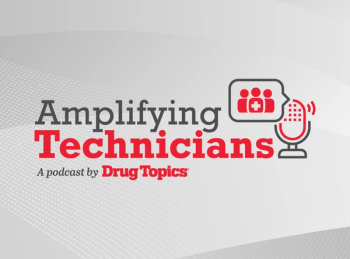
Real-World Data Show Dapagliflozin, Empagliflozin Are Safe Options for Diabetes
However, caution with empagliflozin use should be applied for patients previously taking angiotensin-converting enzyme inhibitors or angiotensin receptor blockers.
Although dapagliflozin (Farxiga) and empagliflozin (Jardiance) show similar cardiorenal and safety outcomes for patients with type 2 diabetes (T2D), unstable prior angiotensin-converting enzyme inhibitor (ACEI) and angiotensin receptor blocker (ARB) use could be a factor in the mortality risk of patients receiving empagliflozin, according to recently published study data.1
“Both dapagliflozin and empagliflozin demonstrated statistically comparable cardiorenal benefits and safety outcomes, with consistent results across various sensitivity analyses and prespecified subgroups,” the study authors said.1 “In the sensitivity analysis focusing on unstable prior ACEI/ARB exposure, empagliflozin use was associated with an increased risk of all-cause death compared [with] dapagliflozin.”
T2D is a complex disease, with treatment often including physical activity, diet changes, and oral or injectable medications to help meet blood glucose goals. Common symptoms can include frequent urination, feeling thirsty, extreme fatigue, blurry vision, and cuts and bruises that are slow to heal. However, according to the American Diabetes Association, sometimes symptoms are so mild that they are often unrecognized.2 Preventing T2D and treating the condition early on can help prevent or reduce the risk of cardiovascular events and chronic kidney disease.
Dapagliflozin is an oral treatment that helps the kidneys prevent the absorption of glucose and can lower glucose levels. Further, it can be used to lower the risk of hospitalization for heart failure, other cardiovascular diseases, and kidney diseases.3 Empagliflozin works similarly, as it also helps to prevent the absorption of glucose. It is also used to lower the risk of cardiovascular disease for patients with T2D and heart or blood vessel diseases. It can also be used to lower the risk of cardiovascular death and hospitalization for patients with heart failure and lower the risk of worsening kidney disease.4
In the current study, investigators gathered multi-institutional electronic health records to analyze the cardiorenal and safety outcomes and the prescribing patterns of both medications for patients with T2D. They aimed to create a comprehensive real-world view of the effectiveness of the medications. Investigators used data from January 2016 to August 2023, and patients included were 18 years and older with T2D and an estimated glomerular filtration rate (eGFR) of 25 mL/min/1.73 m2 or greater who recently initiated dapagliflozin or empagliflozin.1
Between the study dates, 4695 patients met the eligibility criteria for the analysis, with 2649 starting dapagliflozin and 2046 starting empagliflozin. Investigators established 1662 matched pairs. The primary outcome—sustained eGFR decline of 30% or more, end-stage renal disease, hospitalization for heart failure, or all-cause death—occurred in 16.2% of patients in both groups, and there were no differences found in composite renal outcome, hospitalization from any cause, and all-cause death. Additionally, the incidence of adverse events was similar between both groups, including acute kidney injury, hypoglycemia, urinary tract infection, and fracture. Cardiologists prescribed dapagliflozin more often, whereas endocrinologists and nephrologists prescribed empagliflozin more often.1
Furthermore, investigators found that patients with at least 1 ACEI/ARB prescription prior to the index date were associated with higher all-cause mortality when taking empagliflozin compared with dapagliflozin, and the association was seen regardless of treatment duration or continuous use.1
“These findings suggested that dapagliflozin and empagliflozin may be interchangeable treatment options in most clinical scenarios,” the authors said.1 “However, caution may be warranted when prescribing empagliflozin to patients with unstable use of prior ACEI/ARB treatment. Additionally, this study provided novel insights into specialty-driven prescribing behaviors for dapagliflozin and empagliflozin.”
READ MORE:
Ready to impress your pharmacy colleagues with the latest drug information, industry trends, and patient care tips? Sign up today for our
REFERENCES
1. Yang IN, Chong KS, Peng ZY, Ou HT, Wang MC. Comparative effectiveness and prescribing patterns of dapagliflozin vs empagliflozin in type 2 diabetes patients: a target trial emulation. Diabetes Res Clin Pract. Published online August 22, 2025. doi:10.1016/j.diabres.2025.112427
2. Understanding type 2 diabetes. American Diabetes Association. Accessed August 27, 2025. https://diabetes.org/about-diabetes/type-2
3. Dapagliflozin (oral route). Mayo Clinic. Updated February 1, 2025. Accessed August 27, 2025. https://www.mayoclinic.org/drugs-supplements/dapagliflozin-oral-route/description/drg-20095101
4. Empagliflozin (oral route). Mayo Clinic. Updated May 1, 2025. Accessed August 27, 2025. https://www.mayoclinic.org/drugs-supplements/empagliflozin-oral-route/description/drg-20113010
Newsletter
Pharmacy practice is always changing. Stay ahead of the curve with the Drug Topics newsletter and get the latest drug information, industry trends, and patient care tips.






































































































































